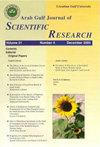Elite athletes and sports training during the COVID-19 pandemic: A mini review
Q4 Business, Management and Accounting
引用次数: 0
Abstract
PurposeThe corona virus disease 2019 (COVID-19) pandemic had devastating impact on sporting activities, education and global health. Given the impact of the pandemic-related restrictions and closed fitness centers and other sports facilities, the coping strategies adopted by athletes while training at home to continue their training remain an important question. The purpose of this review is to examine the findings of key studies focusing on the impact of the pandemic on sport training.Design/methodology/approachA review was conducted on Google Scholar, Scopus and PubMed to identify articles on physical activity and sport training during the COVID-19 pandemic. Eligibility criteria included peer-reviewed empirical and quantitative studies. The selected articles were reviewed using contextual analysis.FindingsThe COVID-19 pandemic had devastating impact on sports activities globally. Studies evaluating the influence of the pandemic on sports training have revealed abysmal decline in training volume and general physical fitness, limited access to facilities and equipment and significant reduction in training load. The damage of the pandemic on the sporting world should serve as a guide for proactive steps that should be taken to prevent recurrence of a similar calamity.Originality/valueThis paper highlights important lessons to be learned from the lockdown imposed by the COVID-19 pandemic by stakeholders in sport, including the importance of improvisation of sports facilities by utilizing available spaces at home and neighborhood for physical training.COVID-19大流行期间的精英运动员和体育训练:小型回顾
目的 2019 年冠状病毒病(COVID-19)大流行对体育活动、教育和全球健康造成了破坏性影响。考虑到与大流行相关的限制和健身中心及其他体育设施关闭的影响,运动员在家中训练时为继续训练而采取的应对策略仍是一个重要问题。本综述旨在研究大流行病对体育训练影响的主要研究结果。设计/方法学/方法在 Google Scholar、Scopus 和 PubMed 上进行了综述,以确定有关 COVID-19 大流行期间体育活动和体育训练的文章。资格标准包括经同行评审的经验性和定量研究。研究结果 COVID-19 大流行对全球体育活动产生了破坏性影响。评估大流行病对体育训练影响的研究表明,训练量和总体体能急剧下降,获得设施和设备的机会有限,训练负荷大幅减少。本文强调了体育界利益相关者从 COVID-19 大流行病造成的封锁中吸取的重要教训,包括利用家庭和邻里的可用空间进行体育训练,从而改善体育设施的重要性。
本文章由计算机程序翻译,如有差异,请以英文原文为准。
求助全文
约1分钟内获得全文
求助全文
来源期刊

Arab Gulf Journal of Scientific Research
综合性期刊-综合性期刊
CiteScore
1.00
自引率
0.00%
发文量
0
审稿时长
>12 weeks
期刊介绍:
Information not localized
 求助内容:
求助内容: 应助结果提醒方式:
应助结果提醒方式:


